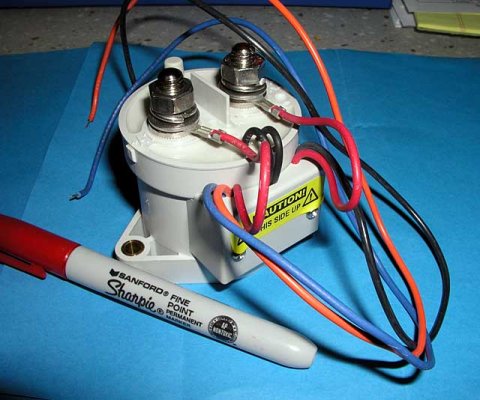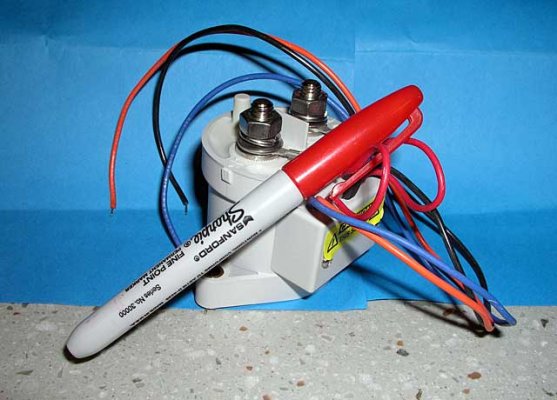Charlie..
a) - I think I have enough tools with me (including a Dremel) to disassemble the solenoid, so that is the goal
b) - don't think corrosion could have been a factor - the compartment is always dry (thanks in no small part to the heat of my Xantrex RS2000)
c) - alternator is the stock 120 amp (or whatever) and it is original. The charge relays (contactors, solenoids ..) of Blue Sea will operate when the source voltage reaches a certain point, and drop at a certain point. The Trombetta probably operates with the same scheme - chassis battery reads above a certain voltage, contactor is operated which bridges both banks. Voltage on the chassis bank drops below a certain point (don't want to discharge one bank into another), the contactor releases which isolated the two banks. The fact that many others have had problems with the same part leads me to believe the culprit is the Trombetta part
Edit: added a couple pictures of the Blue Seas #9112 replacement


